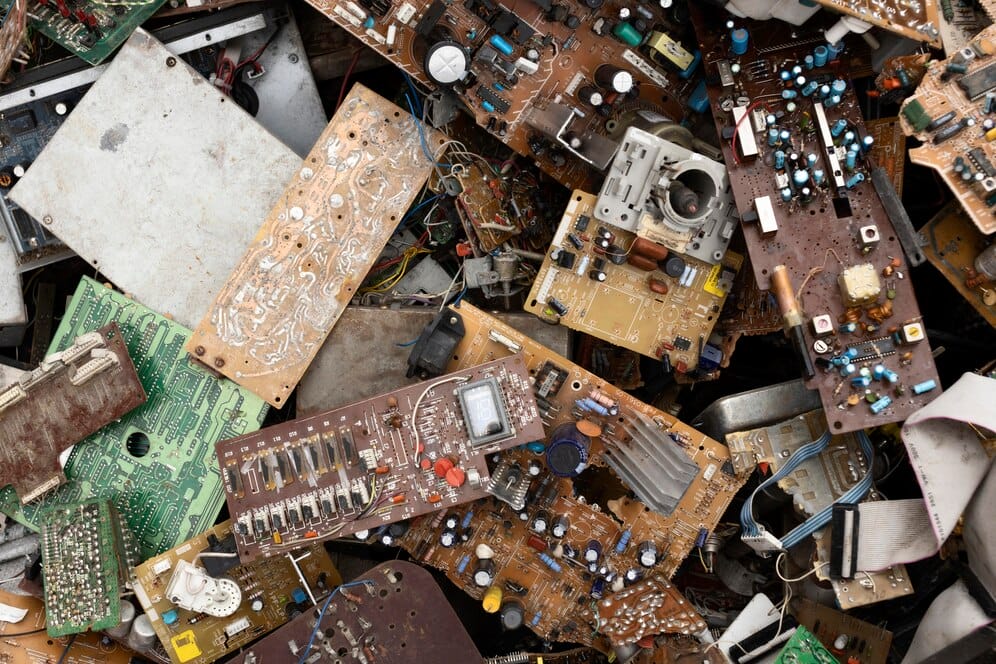Recycling Old Devices: How E-Waste Removal Can Save the Planet

In today’s digital age, electronic devices like smartphones, laptops, and appliances have become essential to our daily lives. However, rapid technological advancements have shortened their lifespans, fueling the growing need for responsible e-waste removal. <\p>
This leads to a growing problem: electronic waste, or e-waste. E-waste refers to discarded electrical or electronic devices. These items often contain hazardous materials such as lead, mercury, and cadmium, which can be harmful to both human health and the environment if not disposed of properly.
This is where e-waste removal services come into play. They offer a safe and responsible way to dispose of old electronics, ensuring that these hazardous materials do not end up in landfills.
Imagine the impact of millions of discarded electronics piling up in landfills. The toxic chemicals can leach into the soil and water, causing long-term environmental damage. By opting for e-waste removal services, you can help mitigate this risk and contribute to a cleaner, healthier planet.
The Importance of Electronics Disposal
Proper electronics disposal is not just about decluttering your space; it’s about protecting the environment and public health. Electronic devices contain valuable resources like gold, silver, copper, and palladium, which can be recovered and reused. However, they also contain hazardous materials that require careful handling.
When you dispose of electronics responsibly, you ensure that these valuable resources are recycled rather than wasted. This reduces the need for mining new materials, conserving natural resources. Additionally, it prevents hazardous materials from contaminating the environment, safeguarding both wildlife and human communities.
Picture this: a community that prioritizes e-waste removal sees a reduction in environmental pollution. The air is cleaner, the water is safer to drink, and the soil remains fertile. This creates a healthier living environment for everyone, especially for future generations who will inherit the planet.
The Environmental Impact of Electronic Waste
The environmental impact of e-waste is significant. When electronic devices are not disposed of properly, they can release harmful toxins into the environment. These toxins can contaminate soil, water, and air, leading to serious health issues for both humans and wildlife.
For instance, lead from old television sets and computer monitors can leach into the groundwater, affecting the quality of drinking water. Mercury from fluorescent lamps and batteries can accumulate in the food chain, posing a risk to both aquatic life and the humans who consume it.
Moreover, the extraction of raw materials for new electronic devices contributes to deforestation, habitat destruction, and climate change. By recycling old devices, we can reduce the demand for these raw materials, thereby minimizing the environmental footprint of the electronics industry.
The Health Risks of E-Waste
The health risks associated with e-waste are numerous. Exposure to the hazardous materials found in electronic devices can lead to a variety of health issues, including respiratory problems, neurological disorders, and even cancer. Children and pregnant women are particularly vulnerable to these health risks.
In communities where e-waste is not properly managed, residents may be exposed to these hazardous materials through contaminated soil, water, and air. This can lead to long-term health problems and increased healthcare costs.
Proper e-waste disposal can significantly reduce these health risks. By ensuring that electronic devices are recycled responsibly, we can prevent hazardous materials from entering the environment and protect the health of our communities.
The Economic Benefits of Recycling
The economic benefits of e-waste recycling are substantial. Electronic devices contain valuable materials that can be recovered and reused, reducing the need for mining new resources. This not only conserves natural resources but also creates job opportunities in the recycling industry.
For businesses, responsible e-waste disposal can lead to cost savings and improved brand reputation. Consumers who prioritize sustainability are more likely to support companies that demonstrate a commitment to environmental responsibility.
Additionally, recycling e-waste can help businesses comply with environmental regulations, avoiding potential fines and legal issues. This can lead to long-term financial savings and a more sustainable business model.
How E-Waste Removal Services Work
E-waste removal services provide a convenient and responsible way to dispose of old electronics. These services typically involve the following steps:
- Collection: The e-waste removal service will collect your old electronic devices from your home or business. This can be done through scheduled pick-ups or drop-off locations.
- Sorting: The collected devices are then sorted based on their type and condition. This helps in identifying which components can be recycled and which need to be disposed of safely.
- Recycling: The recyclable components are sent to specialized facilities where valuable materials are extracted. These materials are then used to create new products, reducing the need for raw materials.
- Safe Disposal: Hazardous materials are disposed of in accordance with environmental regulations, ensuring that they do not contaminate the environment.
Choosing the Right E-Waste Removal Service
Choosing the right e-waste removal service is crucial for ensuring that your electronic devices are disposed of responsibly.
Here are some factors to consider when selecting an e-waste removal service:
- Certification: Look for services that are certified by recognized environmental organizations. This ensures that they follow strict guidelines for e-waste disposal.
- Transparency: A reputable e-waste removal service should be transparent about their recycling and disposal processes. They should be able to provide detailed information about where your devices will be sent and how they will be handled.
- Convenience: Consider the convenience of the service, including pick-up options and drop-off locations. A service that offers flexible scheduling and easy access can make the process of disposing of e-waste much simpler.
- Cost: While cost is an important factor, it should not be the only consideration. Ensure that the service offers fair pricing while maintaining high standards for environmental responsibility.
The Role of Community Involvement
Community involvement plays a crucial role in the success of e-waste removal initiatives. When individuals and businesses come together to prioritize responsible e-waste disposal, the impact can be significant.
Here are some ways you can get involved in your community’s e-waste removal efforts:
- Organize Community Clean-Ups: Partner with local organizations to host community clean-up events focused on collecting and recycling e-waste.
- Educate Others: Share information about the importance of e-waste removal with your friends, family, and neighbors. Encourage them to dispose of their electronic devices responsibly.
- Support Local Initiatives: Support local e-waste removal services and recycling programs. Your participation can help these initiatives grow and make a bigger impact.
The Future of E-Waste Management
The future of e-waste management looks promising, with numerous innovations and initiatives aimed at improving the recycling and disposal of electronic devices. Here are some trends to watch for:
- Advanced Recycling Technologies: New technologies are being developed to extract valuable materials from e-waste more efficiently. These advancements can increase the recovery rates of precious metals and reduce the environmental impact of recycling processes.
- Circular Economy Models: The circular economy model focuses on keeping resources in use for as long as possible. This approach encourages the reuse, repair, and recycling of electronic devices, reducing the amount of e-waste generated.
- Government Regulations: Many governments are implementing stricter regulations for e-waste disposal. These regulations can help ensure that electronic devices are recycled responsibly and that hazardous materials are disposed of safely.
Lorem ipsum dolor sit amet, consectetur adipiscing elit. Ut elit tellus, luctus nec ullamcorper mattis, pulvinar dapibus leo.


